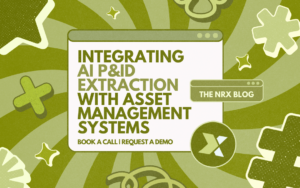According to McKinsey, up to 30% of data in industrial operations is inaccurate, incomplete, or outdated, which can cause substantial inefficiencies and safety risks in return. Plant walkdowns are critical in addressing these data gaps. These structured field inspections ensure physical assets align with their digital records and help organizations keep systems such as CMMS or EAM platforms up to date.

What Is a Plant Walkdown?
A plant walkdown refers to a systematic visual inspection of equipment and infrastructure within a facility. Teams walk through the site to confirm that assets are physically present and properly documented in working condition. These assets may include mechanical systems, electrical units, piping networks, and structural components, each tagged with functional locations.
Walkdowns can occur before system upgrades, post-installation, or during routine audits. Their role in asset verification is pivotal, especially during migrations to advanced systems or digital twins.
Why Asset Verification Matters
Asset verification ensures that what exists in the field is accurately reflected in digital records. When organizations rely on outdated or incorrect asset data, they face operational disruptions that compromise both maintenance effectiveness and regulatory compliance. Inaccurate data also hampers effective use of tools such as IBM Maximo or other EAM systems.
In the oil and gas industry, plant walkdowns often uncover discrepancies in asset records. Equipment such as pumps and motors may have been relocated or modified without proper documentation. These undocumented changes lead to gaps in system data. As a result, automated preventive maintenance may not be triggered, which increases risks to performance and safety.

Digitalization’s Role in Modern Walkdowns
Digitalization has transformed how plant walkdowns are conducted. Teams equipped with tablets and mobile software can capture asset data on-site and instantly update centralized databases. GPS coordinates, barcode scans, and photographic evidence can now support every verification task. This reduces manual entry errors and accelerates the time between inspection and system update.
Some platforms now use augmented reality overlays to help technicians locate assets and verify tag numbers, which makes inspections more intuitive and error-proof. When paired with a digital twin, walkdowns also allow teams to reconcile the physical and virtual representations of a plant.
Common Challenges and How to Address Them
Despite the benefits, walkdowns come with challenges. Tagging practices may vary between departments and time periods. Documentation sometimes lacks updates or may be entirely absent. Older systems may store critical records only on paper or in scattered digital files that lack standardization.
A focused area-by-area inspection plan creates a more manageable path toward improvement. High-priority zones allow for better oversight and early adjustments. Verified data collected in the field can be entered into the central asset management system. This step increases confidence in both the process and the tools. Field observations linked with accurate data extraction strengthen the foundation of future asset management decisions.
Conclusion
Plant walkdowns go beyond routine checks. They reinforce asset integrity and improve compliance with industry standards. Verified asset data improves the accuracy of digital records and helps ensure reliable maintenance planning. As more operations shift toward digital platforms, walkdowns serve as the foundation for long-term system upgrades and strategic use of asset data.
Integrating AI P&ID Extraction with Asset Management Systems
ISO 14224 vs Other Maintenance Standards: What Sets It Apart?
Building Trust in Your Asset Data: Strategies for Governance
Share this article




